1 large or two small stollen
This traditional recipe is from Peter Reinhart’s The Bread Baker’s Apprentice
Preparation: 1 hour sponge; 20 minutes mixing; 2 hours fermentation, shaping, and proofing; 50 to 70 minutes baking
Ingredients:
Sponge:
- 1/2 cup whole milk
- 1/2 cup all-purpose flour
- 4 teaspoons instant yeast
Fruit:*
- 1 cup golden raisins, plus additional for sprinkling on final dough
- 1 cup candied fruit mix, plus additional for sprinkling on final dough
- 1/2 cup brandy, rum, or schnapps
- 1 tablespoon orange or lemon extract
*If you prefer, you can substitute regular dried fruit, such as dried cranberries or apricots, for the candied fruit.
Dough:
- 2 1/4 cups unbleached all-purpose flour
- 1 tablespoon sugar
- 3/4 teaspoon salt
- 1 teaspoon grated orange zest (optional)
- 1 teaspoon grated lemon zest (optional)
- 1 teaspoon ground cinnamon
- 1 large egg
- 5 tablespoons unsalted butter, at room temperature
- About 1/4 cup water
- 1/2 cup slivered blanched almonds (or marzipan)
- Vegetable oil or melted butter for topping
- Powdered sugar for topping
Directions:
Make the sponge by warming the milk to about 100°F. Whisk in the flour and yeast. Cover with plastic wrap and ferment for 1 hour, or until the sponge is very foamy and ready to collapse when tapped.
Combine 1 cup each of the raisins and fruit mix, the brandy, and the orange extract. Set aside.**
**To improve the flavor and preserve the bread, it is best to soak the fruit a few days ahead of time. Here’s how:
Two days before making this bread, soak the raisins and candied fruit in the brandy, rum, or schnapps and the orange or lemon extract, tossing the fruit a few times a day until the liquid is absorbed. If you’d prefer not to use alcohol, you can double the amount of extract and add 1/2 cup of water. You can also simply add the fruit, without the alcohol, into the final dough and add the extract directly to the dough.
I used raisins and dried cranberries for this recipe since that is what I had on hand. I soaked the raisins and cranberries in orange extract and water for a couple of days which gave them a very nice aroma and flavor.
To make the dough, in a mixing bowl (or in the bowl of an electric mixer), stir together the flour, sugar, salt, orange and lemon zests, and cinnamon. Then stir in ( or mix in on low speed with the paddle attachment) the sponge, egg, butter, and enough water to form a soft, but not sticky, ball.
This should take about 2 minutes. When the dough comes together, cover the bowl and let the dough rest for 10 minutes.
Add in the fruit and mix it with your hands (or on low speed) to incorporate.
Sprinkle flour on the counter, transfer the dough to the counter, and begin kneading (or mixing with the dough hook) to distribute the fruit evenly, adding additional flour if needed. The dough should feel soft and satiny, tacky but not sticky. Knead for approximately 6 minutes (4 minutes by machine). Lightly oil a large bowl and transfer the dough to the bowl, rolling it around to coat it with the oil. Cover the bowl with plastic wrap. Ferment at room temperature for 45 minutes. The dough will rise somewhat but will not double in size.
Sprinkle flour lightly on the counter and transfer the dough to the counter. If you are making 2 loaves, divide the dough in half. (I’m making one big loaf)
With your hands, form the dough into a thick rectangle, 8 by 4 inches (5 by 3 inches for 2 smaller loaves), and dust it with flour.
Sprinkle the top with slivered almonds and extra fruit.
Take a small rolling pin and press down on the center of the rectangle,
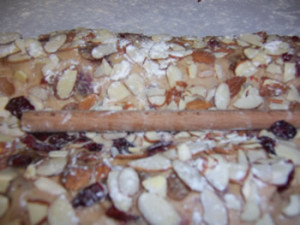
Roll the dough in the center only, leaving 1 inch at both the top and the bottom edges as thick as the original rectangle.
The new rectangle, with its thick top and bottom edges, should be 12 inches wide by 6 inches long (8 by 5 inches for 2 loaves). The interior of the rectangle should be about 1/2 inch thick.
Using a pastry scraper to loosen the dough from the counter, lift the top edge and bring it down and over the bottom edge, going just past the bottom edge. The thin inside part of the rectangle should remain behind the bottom edge.
Turn the dough seam side up and tuck additional slivered almonds and fruit under the dough flap.
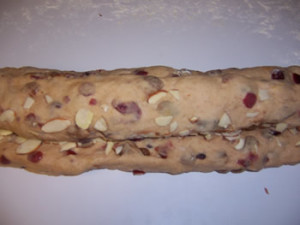
Fold the top edge back over the bottom edge and rest it on the thin center section. Tuck more almonds and fruit under the new fold. The dough should have a folded, layered look, with fruit and almonds peaking out both sides. Gently squeeze the loaf to press it together.
Line a sheet pan with baking parchment. Transfer the stollen to the pan and, as you set the dough down, curl it into a slight crescent. Mist the dough with spray oil and cover loosely with plastic wrap.
Proof for approximately 1 hour at room temperature, or until the dough is 1 1/2 times its original size. Preheat the oven to 350°F with the oven rack on the middle shelf. Bake the stollen for 20 minutes.
Rotate the pan 180 degrees fro even baking and continue to bake for 20 to 50 minutes, depending on the size of the loaves. The bread will bake to a dark mahogany color, should register 190°F in the center of the loaf, and should sound hollow when thumped on the bottom.
Transfer the bread to a cooling rack and brush the top with vegetable oil while still hot. Immediately tap a layer of powdered sugar over the top through a sieve or sifter.
Wait for 1 minute, then tap another layer over the first. The bread should be coated generously with the powdered sugar.
Let cool for at least 1 hour before serving. When completely cool, store in a plastic bag. Or, leave them out uncovered overnight to dry out slightly, German style.
Happy Baking!–Cathy
Additional festive bread recipes and resources:
![stollen 043_thumb[1] stollen 043_thumb[1]](https://www.breadexperience.com/wp-content/uploads/stollen-252520043_thumb-25255B1-25255D-25255B5-25255D-300x197.jpg)
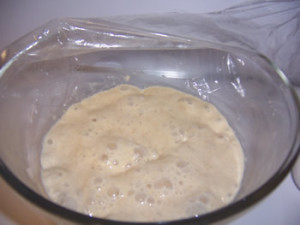
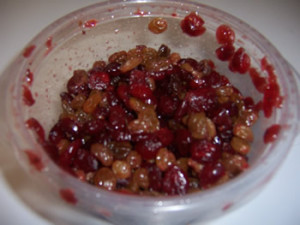
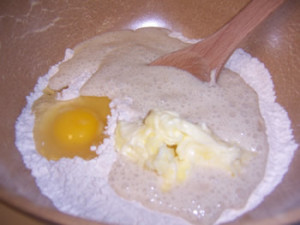
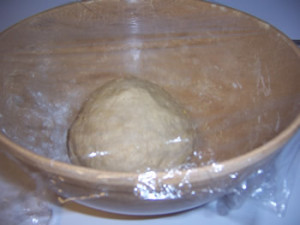
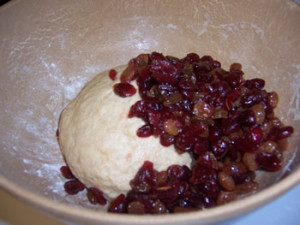
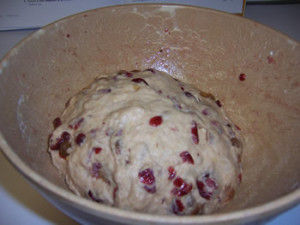
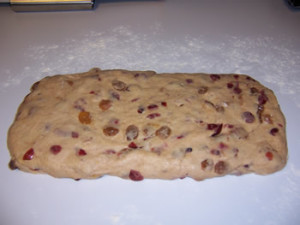
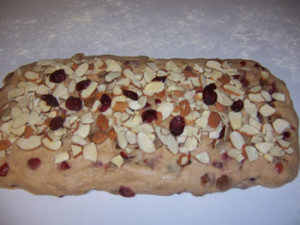
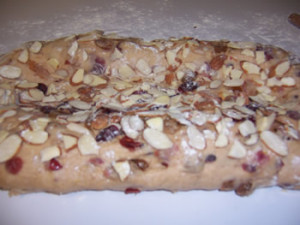
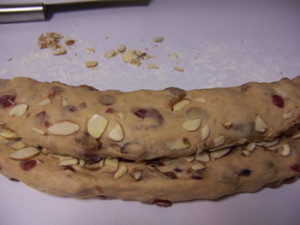
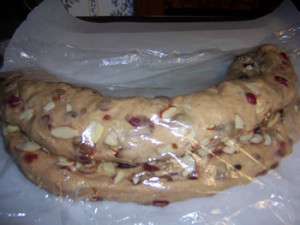
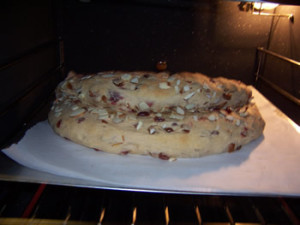
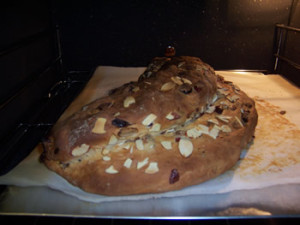
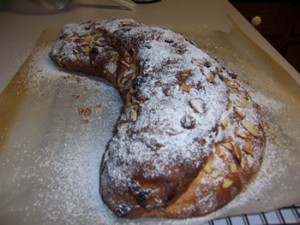
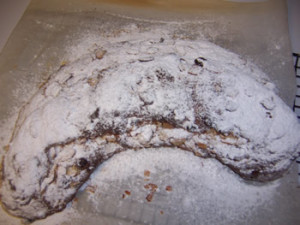
![stollen 039_thumb[1] stollen 039_thumb[1]](https://www.breadexperience.com/wp-content/uploads/stollen-252520039_thumb-25255B1-25255D-25255B5-25255D-300x193.jpg)
Lauren says
I am so glad that I found this! I am getting a bunch of recipes together for Christmas and I found this in my copy of BBA, but I could not figure out his instructions for the shaping.
Thank you! 🙂
Cathy (breadexperience) says
Hi Lauren, thanks for stopping by. This is a great recipe for Stollen. You’ll like it!
little things life says
I wanted to thank you for the detailed recipe and to ask you a question. How long does this stollen keep? In some cases recipes call for up to 5 days and sometimes it is best to eat it from day 15 to 20. Where does this stollen fall when it comes to freshness and flavor? Thanks and all the best!
Cathy (breadexperience) says
This Stollen keeps really well especially if you soak the fruit in brandy or rum. I used orange juice and orange extract for this one and it kept for over a week. I’ve used rum in other versions.
According to Peter Reinhart, the creator of this version, soaking the fruit for a few days ahead of time improves the flavor and preserves the bread for weeks. That is, if it doesn’t get eaten before then.
You can also dry the bread out for a few days, or even weeks, as the Germans do, before eating it. Then, just slice off thin, hard slices. This makes it almost like biscotti. I prefer mine version a little bit fresher than that, but I think it’s just a matter of preference.
little things life says
Thanks for this detailed recipe for stollen. Can you please tell me how long does this stollen keep? Some recipes call for 15-20 days, others for up to 5 days? Thanks and all the best!
little things life says
Cathy, thanks for your answer! In some recipes the taste is said to improve over time, but it seems that here no waiting is necessary. I guess, I’ll have to experiment and find out for my self :). Pleasant Christmas cooking from this side of the world!
team JOB says
Hi! I’m trying this right now…but I needed to add about twice as much milk to the sponge…it was way to dry. anyone else experience this?
Cathy (breadexperience) says
I’m so sorry. It should be 1/2 cup of milk and 1/2 cup of all-purpose flour. No wonder your sponge was so dry. I’ll update the list of ingredients.
team JOB says
Thanks Cathy….I just winged the rest of the proportions…but it feels like bread, as long as if rises it will be good still. 🙂
Cathy (breadexperience) says
Please do let me know how it turns out. 🙂